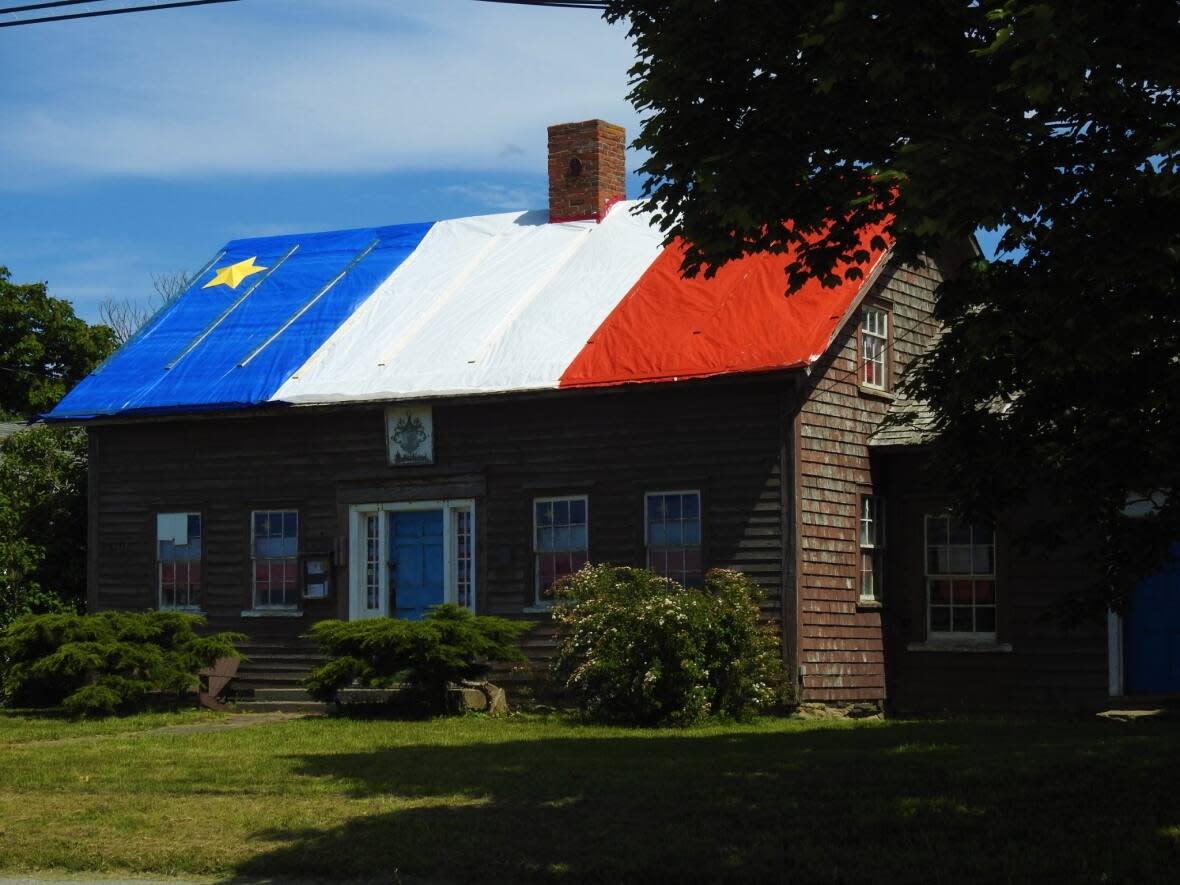226-year-old Acadian home a finalist in national restoration competition

A 226-year-old home in Meteghan, N.S., that was built following the expulsion of the Acadians is in the running to be restored after sitting vacant for more than two decades.
La Vieille Maison is one of 10 finalists in the National Trust's Next Great Save competition, which offers a $50,000 prize to be used to adapt, renew or improve a heritage building.
Adrien Comeau, the president of the committee de La Vieille, said the historic home is in desperate need of repairs.
"When I first stepped into that building, it really hit me in the face and it showed me that we are losing a part of our heritage by letting this building go," Comeau told CBC Radio's Information Morning Nova Scotia on Friday.
Comeau said the community has been campaigning to save the building, which sits in front of a local wharf, and features a bright blue door and a large Acadian flag that serves as a tarp on its roof.
"It's really in the heart of our community," he said.
History of the home
Between 1755 and 1763, the British forced about 10,000 Acadians to leave their farms in what is now Nova Scotia and New Brunswick. Most ended up in the American colonies, Louisiana, the Caribbean or France.
Eventually, some Acadians were allowed to return, but their farmland had been given to colonists from New England.
In 1796, Antoine Theriault returned and built the house for himself and his family in Comeauville, a small community in the Municipality of Clare.
More than a century later, in 1958, the house was purchased by Adolphe Robicheau, a gay man who was born in Clare, who had become a world-renowned ballet dancer based in Boston, Mass.
When Robicheau returned to the area, he moved the house to a plot of land in Meteghan that once belonged to his ancestors, and turned it into a museum that illustrated the life of Acadians after their return from exile.

Comeau said it's important to recognize Robicheau's service to preserving the home's history.
"We see a building that was brought there to preserve our history, to preserve our heritage by a man in which many people would not put their reflection on him due to the fact that he was one, a male ballet dancer and two, that he was married to another man," Comeau said.
"But still today we have that beautiful building that we need to save and that we want people to know and see their heritage through it."
Robicheau died in 1978 and left the museum to the Historical Society of Clare. The society operated the museum until 2002, before it was transferred to relatives of Robicheau in the United States.
Comeau said the home sat empty until last year, when he became the president of the committee de La Vieille.
"Once we opened the doors, 20 years after the door was locked, the first thing we saw was [Robicheau's] ballet shoes that we're still waiting for us to put them on and start dancing."
Strong competition in B.C.
As of Friday, La Vieille Maison is in second place, going up against nine other competitors from across Canada. The home is trailing only behind the Duncan Train Station in British Columbia.
Comeau said people can vote for the home once a day until Feb. 22. A winner will be announced on Feb. 23.
He said if La Vieille Maison wins the $50,000 prize, the first task will be to replace the roof with new wooden shingles, and then the foundation and window frames will get some work done.
"We need to save this building because we want the generations of tomorrow [to] be able to know their heritage by this building."
MORE TOP STORIES

 Yahoo Movies
Yahoo Movies 
